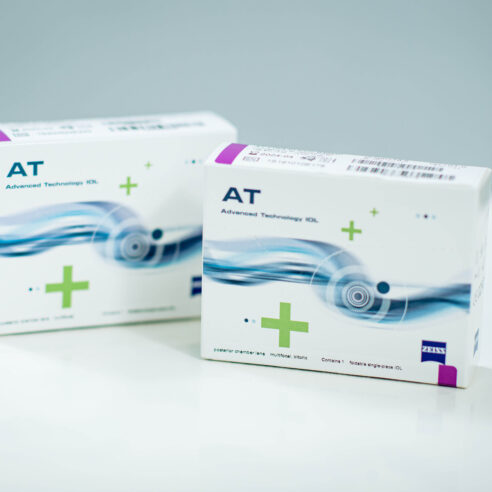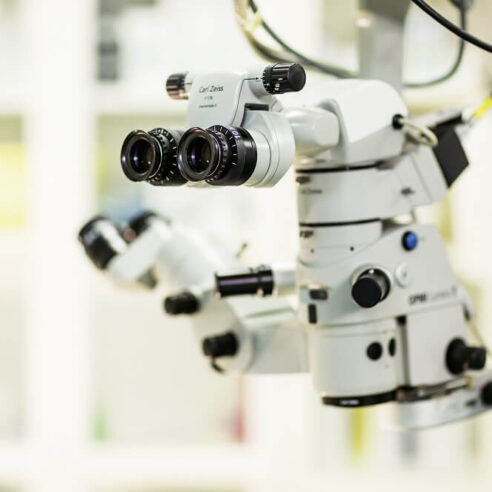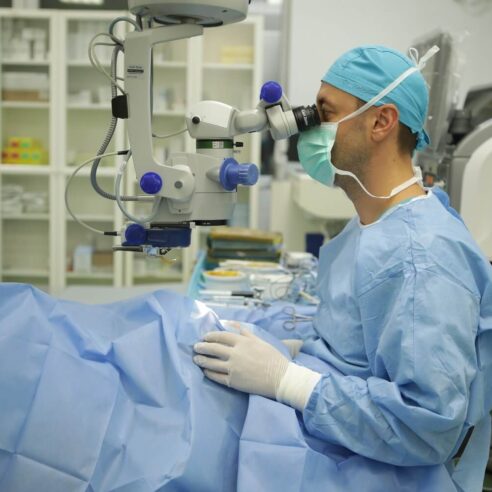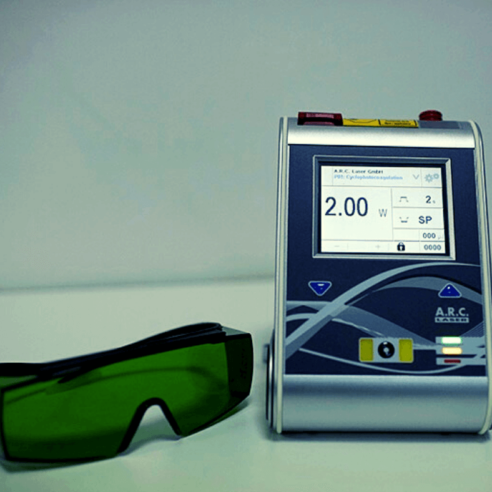
What you need to know
SMILE PRO is the second generation of SMILE surgeries. After the success of RelEx SMILE, Zeiss has developed the next level of this technology.
SMILE® PRO (Small Incision Lenticule Extraction) is the latest version of the SMILE® technique in laser eye surgery. Known as lenticular laser surgery, it is minimally invasive, gentle and painless. Recovery time is also faster and there is less risk of infection and dry eye associated with other procedures.
Dr. Holhoș clinic is the first in Transylvania to offer this type of surgery to reduce diopters. SMILE® PRO is only available using the Carl ZEISS Visumax® 800 Femtosecond laser. ZEISS has been known for precision and expertise in optics for more than 170 years. They developed the unique and innovative SMILE procedure, which uses a highly precise femtosecond laser system.
From January 2025, the Dr. Holhoș network will also perform the SMILE Pro hyperopia surgery, the latest development of the SMILE Pro technique.
SMILE PRO allows the following refractive errors to be corrected:
- Myopia up to -10 diopters
- Myopic astigmatism up to -5 diopters
- Myopia and myopic astigmatism up to combined -15 diopters
- Hyperopia – up to +7 diopters
- Hyperopic astigmatism – up to +4 diopters
What does the SMILE PRO surgery involve?
SMILE® is a minimally invasive incision that creates only a small incision (80% smaller than LASIK).
The SMILE PRO technique is performed without a flap (corneal flap) and without removal of the corneal epithelium. It preserves corneal tissue, there is no pain during the surgery and recovery period, it takes a little time and visual acuity stabilizes very quickly after the surgery.
Smile PRO takes only 7 seconds, and can also operate + diopters!
Step 1: Creating the lenticule

A lenticule and a small incision are created inside the intact cornea.
Step 2: Lenticule removal

The lenticule is removed through a small incision with minimal disruption of the cornea.
Step 3: Correcting the refractive error

Removing the lenticule changes the shape of the cornea, correcting the refractive error.
What are the benefits of SMILE® PRO?
SMILE® Pro is a one-step laser procedure
SMILE® Pro is performed in just 7 seconds
SMILE® Pro leaves the upper layers of the cornea less affected, which means a much lower risk of dry eye or infection after surgery.
SMILE® Pro has a faster recovery, with patients able to see well immediately after surgery
SMILE® Pro is silent and odorless
SMILE® Pro is suitable for people who practice contact sports, surfing or for those employed in the military or as flight personnel.
Who is SMILE® PRO surgery recommended for?
Patients over 20 years of age who have had stable refraction (diopter) for more than 12 months.
Myopic (nearsighted) patients, patients with hyperopia or patients with astigmatism
People who have good vision with glasses or contact lenses
When is SMILE® PRO not recommended?
Pregnant or breastfeeding patients (first 6 months at least)
Patients over 40 years of age.
Patients with thin corneas or suffering from keratoconus.
What are the risks of SMILE® PRO laser surgery?
Although the risks are minimal and very rare, as with any intervention, they can occur.
Although less than in case of other surgeries, there may still be a risk of infection and scarring. It is important to complete post-operative treatment with eye drops and check-ups to avoid this.
During the procedure, there may be a case of what is known as aspiration loss. If this happens, another type of vision correction may be required. In the rare case that this happens, everything will be explained to you.
SMILE® is the latest laser eye surgery technique. As a result, there are no long-term studies. However, the level of predictability is high. With over 10 million successful surgeries completed worldwide, the risks of complications are rare and are considered less than 1 in 5000.
What to expect during SMILE® PRO surgery
Before surgery
Our team will explain you step by step what you need to do in preparation for the surgery, right from the last examination. It is necessary to stop wearing contact lenses at least a few days before the surgery, but this time varies from patient to patient, depending on each case. Your doctor will tell you at your initial examination how long you need to go without contact lenses. You will also be prescribed a treatment with eye drops in the days before the surgery.
On the day of the surgery, Dr. Holhoș will see you once more before the surgery.
You will be prepared for surgery by our nurses, and led into the operating room.
During the procedure
The full SMILE® Pro procedure (setup and surgery) takes approximately 5-10 minutes per eye. It will be a pain-free experience as topical anesthetic (eye drops) will be administered to numb the front of the eye. You will also have an instrument inserted under your eyelids to prevent you from closing your eye or blinking during the procedure.
Your doctor will talk you through the procedure with instructions on where to look. It is common to feel a bit of pulling as the doctor removes the lenticule, however, it does not hurt. Once treatment is complete, we will apply both an antibiotic and eye drops.
It is normal for vision to appear blurred immediately after surgery. It is very important not to rub the eye after the surgery.
Postoperative recovery
A check-up will be carried out the following day, followed by another check-up a week later. It is mandatory to follow the prescribed treatment with eye drops after the surgery.
A 3-month and then 6-month check-up is necessary to test your vision and make sure everything has healed successfully.














